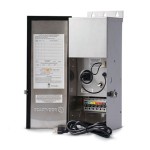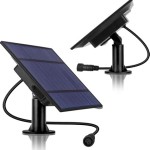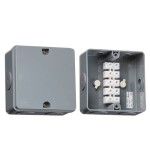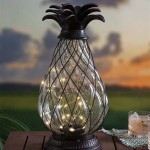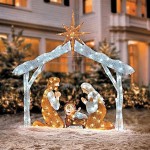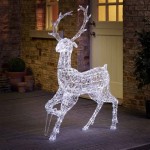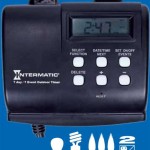Outdoor Lamp Post Troubleshooting
Outdoor lamp posts enhance the beauty and security of a property. However, like any electrical fixture exposed to the elements, they can experience issues. This guide provides a systematic approach to troubleshooting common outdoor lamp post problems.
Safety First: Before commencing any troubleshooting, ensure the power supply to the lamp post is switched off at the breaker box. This crucial step prevents electrical shocks and ensures personal safety.
1. Check the Power Source: The most basic issue might be a tripped circuit breaker or a blown fuse. Locate the correct breaker or fuse in the main panel and check its status. If tripped, reset the breaker. If a fuse is blown, replace it with a new one of the same amperage rating. After restoring the power supply, check the lamp post. If it still doesn't work, proceed to the next step.
2. Inspect the Bulb: A burned-out bulb is a frequent culprit. Carefully remove the bulb and examine the filament for breakage. If the filament is broken or appears darkened, replace the bulb with a new one of the correct wattage and type. Ensure the new bulb is securely screwed into the socket. Test the lamp post after replacing the bulb.
3. Examine the Photocell (If Applicable): Many outdoor lamp posts utilize photocells, also known as dusk-to-dawn sensors. These sensors automatically turn the light on at dusk and off at dawn. Over time, photocells can fail. To test the photocell, cover it completely with a dark cloth during daylight hours. If the lamp post turns on, the photocell is likely faulty and needs replacement. Consult the manufacturer's instructions for proper replacement procedures.
4. Check the Light Socket: Corrosion or loose wiring within the light socket can prevent the bulb from making proper contact. Carefully inspect the socket for any signs of damage, debris, or corrosion. If corrosion is present, use a wire brush or contact cleaner to remove it. Ensure all wires connected to the socket are secure and undamaged. Tighten any loose connections.
5. Inspect the Wiring: Wiring issues can occur due to weather exposure, rodent damage, or improper installation. Trace the wiring from the light socket back to the power source, looking for any signs of damage, such as frayed insulation, cuts, or chewed sections. If any damage is found, the affected wiring section must be replaced. This task is best handled by a qualified electrician.
6. Check the Fixture Connections: The lamp post fixture itself may have loose connections. Open the fixture housing and inspect the wiring connections where the main power cable enters the fixture. Ensure all connections are tight and secure. Look for any signs of corrosion or damage to the wires. If necessary, clean or repair the connections. If unsure about handling electrical connections, consult a qualified electrician.
7. GFCI Outlet Issues (If Applicable): If the lamp post is connected to a Ground Fault Circuit Interrupter (GFCI) outlet, the GFCI itself might have tripped. Locate the GFCI outlet and press the reset button. Test the lamp post. If the GFCI trips again immediately, there may be a ground fault issue within the lamp post wiring, requiring professional attention.
8. Consider the Timer (If Applicable): Some outdoor lamp posts are controlled by timers. If the timer malfunctions, it can prevent the light from operating correctly. Check the timer settings to ensure they are configured properly. Try bypassing the timer temporarily to determine if it is the source of the problem. If the timer is faulty, it will need to be replaced.
9. Assess for Water Damage: Exposure to rain and moisture can cause corrosion and damage to electrical components within the lamp post. Inspect the fixture for any signs of water ingress. Check for cracks or gaps in the fixture housing that might allow water to enter. Seal any openings with a suitable sealant. If significant water damage is present, it may be necessary to replace the entire fixture.
10. Voltage Tester Application: A voltage tester can be a valuable tool for diagnosing electrical problems. Use a non-contact voltage tester to check for the presence of voltage at various points along the circuit, such as the breaker, the wiring connections, and the light socket. This can help pinpoint the location of the fault.
When to Call a Professional: While many lamp post issues can be resolved with basic troubleshooting, some problems require the expertise of a qualified electrician. If the problem persists after attempting these steps, or if you are uncomfortable working with electricity, it is recommended to contact a licensed electrician for assistance.

Troubleshooting Your Gas Lights American Lamp Works

How To Replace Repair Of A Lamppost Sensor Simple 15 Diy

Replace An Outdoor Lamp Post In 5 Steps Doityourself Com

How To Replace The Light Sensor Switch In An Outdoor Lamp Easy Way

Dusk To Dawn Light Troubleshooting Quick Solutions 2024

Troubleshooting Low Voltage Landscape Lighting Problems Solutions

Tips And Trick For Solar Outdoor Lighting Troubleshooting

What Is A Dusk To Dawn Sensor And How Does It Improve Your Outdoor Lighting

How To Install An Outdoor Lamp Post Light Fixture

Harbor Breeze Al0344morb Outdoor Post Light Instruction Manual
Related Posts
